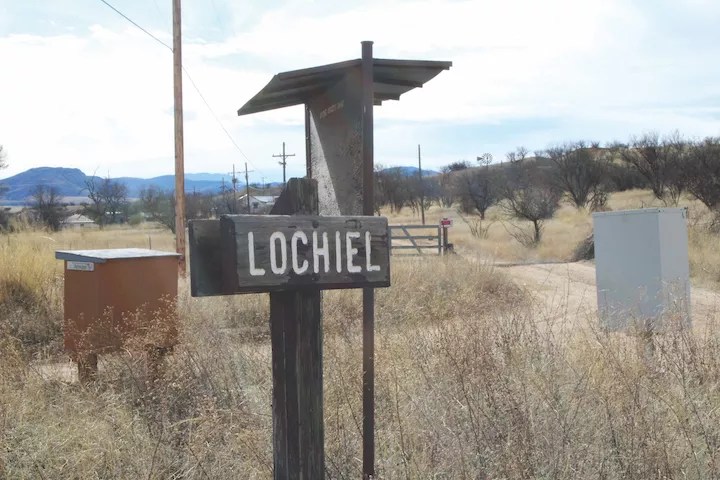
Ray Stern

Audio By Carbonatix
This story was originally published on March 28, 2019. The headline was updated on March 30, 2019.
On February 11, veteran anti-immigrant activist and border enforcement enthusiast Glenn Spencer sent an email to anti-immigrant crusader Kris Kobach.
Three nights earlier, on February 8, Kobach, former Trump White House chief strategist Steve Bannon, immigration hardliner and erstwhile Colorado congressman Tom Tancredo, Breitbart Texas Managing Editor Brandon Darby, and other notable figures in right-wing and anti-immigrant political spheres, had shared a stage at an event held just south of Tucson.
At the town hall-style event, the group spoke to assembled members of the Quail Creek Republican Club, and raised money – ostensibly for the construction of a privately funded wall along the nation’s border with Mexico.
Spencer had just watched a video of the event.
“Kris, I watched the Town Hall in Tucson. This is my general impression of what I saw:
“Ineptitude of a scale capable of creating a breading [sic] ground for charges of fraud – and a defense lawyer’s gold mine.”
Kobach, Bannon, Tancredo, Darby, and others – including Blackwater founder Erik Prince and former Milwaukee County Sheriff David Clarke – serve as members of the advisory board of WeBuildtheWall Inc.
Kobach has a long history in the trenches of the American anti-immigrant war. As counsel for the Immigration Reform Law Institute, he was credited as being one of the architects of Arizona’s controversial racial profiling law, SB 1070. In 2010, he was elected Kansas Secretary of State following a campaign waged largely on claims of voter fraud carried out by undocumented immigrants. Kobach served as an immigration and voter fraud adviser to both the 2016 Trump presidential campaign and subsequent administration. He lost a Kansas gubernatorial bid in 2018.
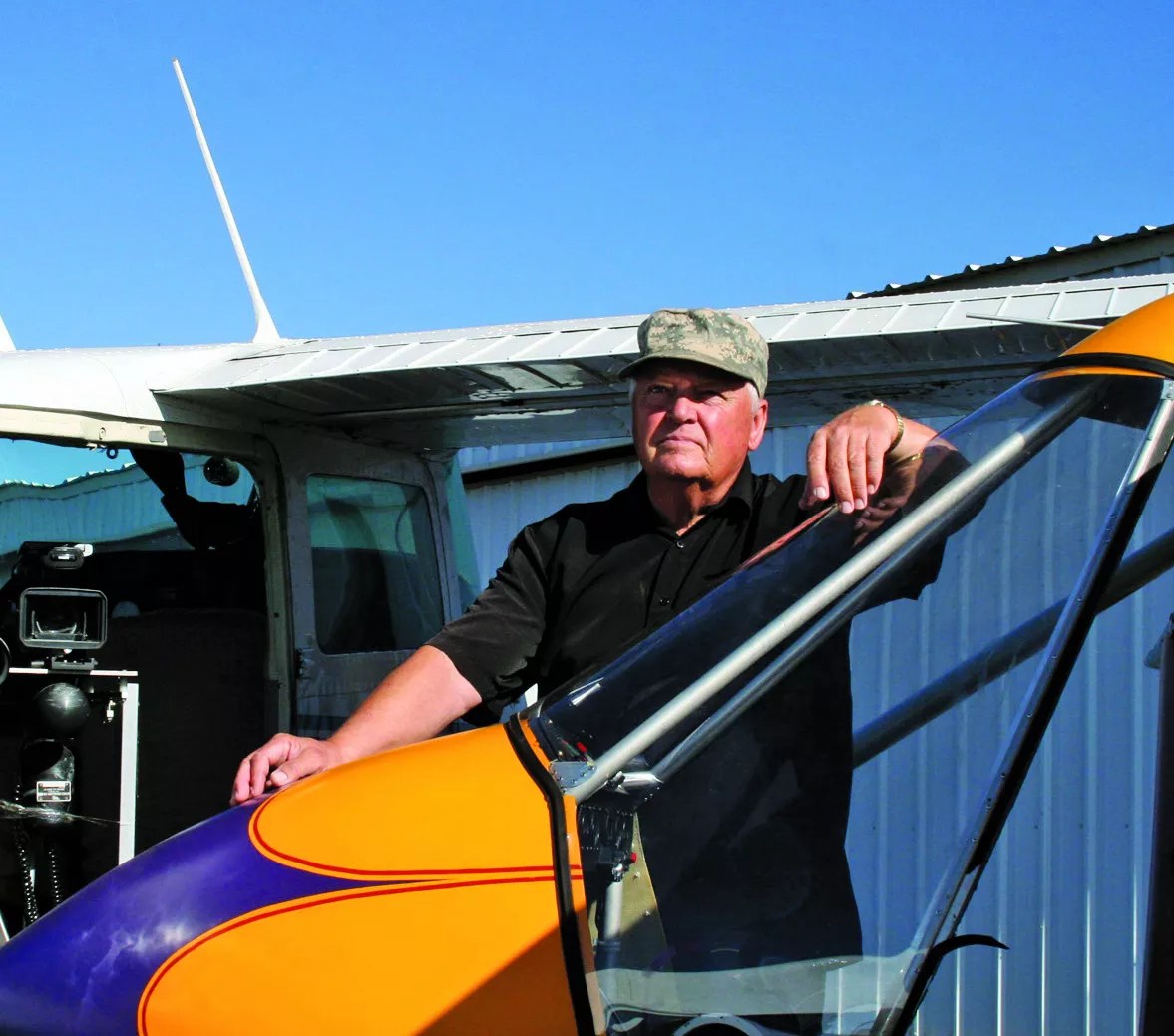
Veteran anti-immigrant activist and border enforcement enthusiast Glenn Spencer.
Chad Knaeble
WeBuildtheWall claims to be operating with the “blessing” of President Trump, with Kobach serving as its conduit to the White House.
The group says it has spent the past few months working to secure private building sites for a privately funded and privately owned border wall – to protect the United States from insurgent Latin American hordes – in Texas, New Mexico, and Arizona.
The reality, Phoenix New Times has found, is that there is an incredibly small amount of actual international border in private hands in Arizona – and none in areas where federal border wall does not already exist.
The vast majority of the border in Arizona exists on land owned by the federal government – land where private citizens cannot build their own walls.
Few private landowners on, or very near, the border had heard of WeBuildtheWall before being approached by New Times. Fewer still had any interest in having sections of private wall built on their property.
In February, WeBuildtheWall indicated that its first building site – covering a substantial stretch of the border – would be in Arizona. The group repeatedly has stated its intent to break ground on its first site in April.
As anticipated construction approaches, the group has been tight-lipped – speaking almost exclusively with friendly right-wing media, offering little by way of concrete detail, and guarding the prospective landing site of the alt-right’s private border wall as if it were a state secret.
But secrets don’t keep, and are especially perishable along the border line, where even the most mundane detail of daily life is politicized, and the banal is painted with lurid detail.
New Times, through interviews with border-area landowners, learned of a site where WeBuildtheWall has been negotiating to build its wall.
Its investors may be disappointed.
And more than constructing a barrier at the border, according to interviews and documents, it appears that WeBuildtheWall is a fundraising machine geared toward political activity related to the 2020 presidential election.
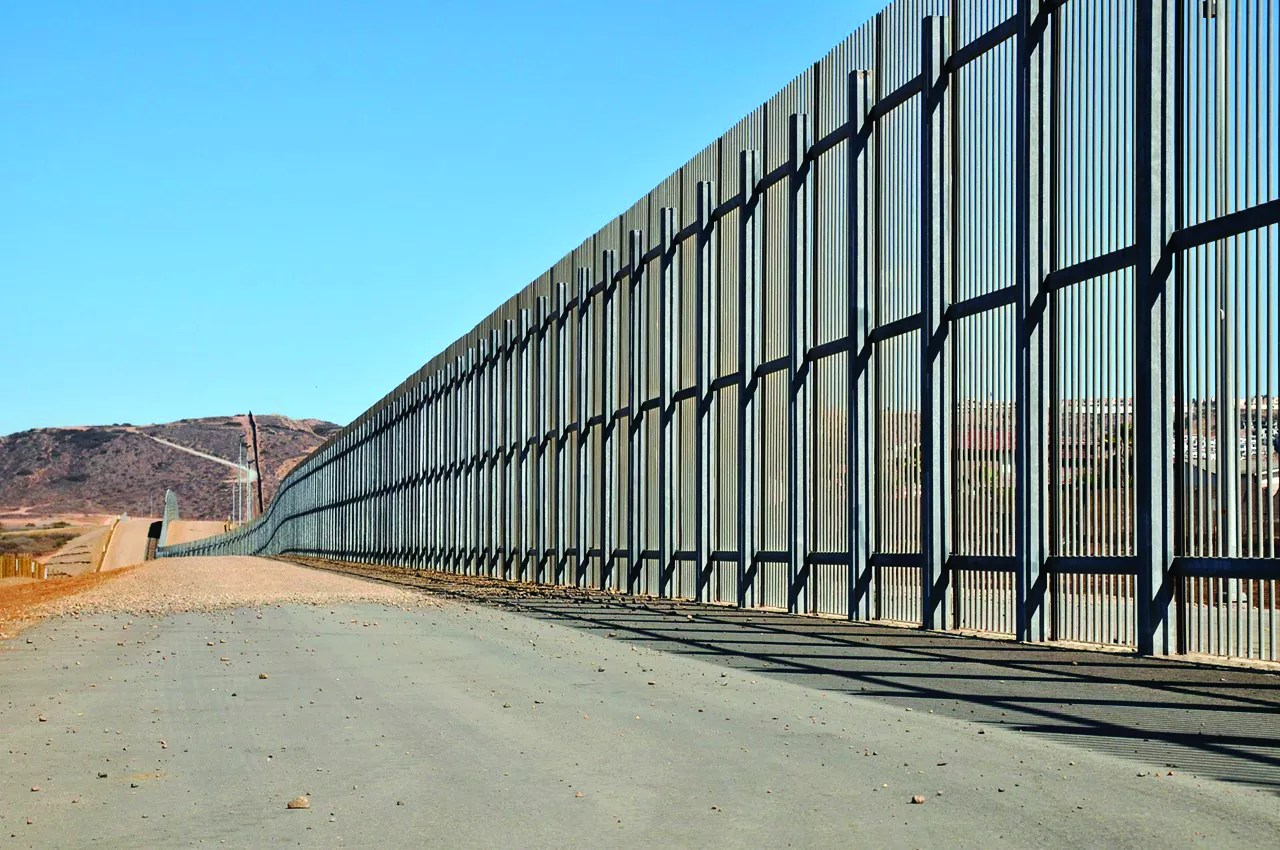
Many places in Arizona already have a big, beautiful wall.
Jonathan Macintosh/Flickr
IF WE BUILD IT, MONEY WILL COME
WeBuildtheWall Inc. was incorporated as a nonprofit organization in the state of Florida on December 28, 2018. The sole director listed at the time of incorporation was Brian Kolfage (also present at the Quail Creek Republican Club event), who serves as the organization’s president.
According to reporting in the Military Times, Kolfage, a veteran of service with the U.S. Air Force, became the “most severely wounded airman to survive any war in U.S. history” following injuries sustained in Iraq on September 11, 2004. These resulted in the amputation of both legs and his right hand and forearm.
Kolfage’s military injuries gave him a level of celebrity status, which he lent to various right-wing propaganda efforts, including those supportive of the Trump 2016 presidential campaign and subsequent administration.
Then, on December 16, 2018, in the midst of the brewing political storm over federal funding for the fulfillment of Trump’s central campaign promise to build a “big and beautiful” wall at the southern border, Kolfage launched a fundraising campaign through the crowdsourcing platform, GoFundMe.
With a goal of raising $1 billion, Kolfage’s “We the People Will Fund the Wall” GoFundMe campaign pledged to give all donated revenue to Congress for use in border wall construction in lieu of taxpayer funding.
In a little more than a week, the federal government would embark on the longest shutdown in U.S. history because Congress would not approve funding demanded by the president for his border wall. Through the Christmas holiday and early January, Kolfage’s campaign would raise more than $20 million from roughly 350,000 donors.
In January, the group announced it did not believe the new Democratic majority of the U.S. House of Representatives would allow donations to be used in the construction of a border wall. As such, Kolfage announced that WeBuildtheWall Inc. would, in fact, build the wall itself, using private funding, private contractors, on private property.
Given the sudden shift in mission statement, GoFundMe stated that donations received under the initial mission of “We the People Will Fund the Wall” would be refunded, unless donors elected to “opt in” to the new mission.
GoFundMe did not respond to questions pertaining to how many donors had “opted in” or how much of the money would be refunded to donors who declined.
The group has since added other revenue streams, including the solicitation of direct donations mailed to a post office box, sales of merchandise, and town hall-style events.
On March 9, through Facebook, Kolfage claimed that the group had raised a total of approximately $23 to $24 million from nearly 400,000 donors. WeBuildtheWall Inc. had been created as a tax-free vessel to receive these funds.
The fact that words like “ineptitude” and “fraud” sprang from criticism of WeBuildtheWall offered by Spencer is significant. Spencer is no “open borders” anarchist or Democrat.
To the contrary, Spencer believes he, his border enforcement efforts, and the truth of threats posed to the nation through Hispanic immigration have been “blacked out by the liberal media.”
Spencer, who has drawn criticism for apparent ties to white nationalist groups, moved from California to Cochise County in 2002 during the height of the border vigilante movement. There, he currently owns a 100-acre spread adjacent to the confluence of the San Pedro River and the international border. This is the home base for American Border Patrol, a private organization founded by Spencer.
He rejects criticism related to his past activities and longstanding views on Latin American immigrants, who, Spencer said, are largely unable to cope with American democracy or rise above a certain “plateau” of performance in American society.
That criticism, he said, has impeded his ongoing efforts to sell a border surveillance system he developed to the U.S. Department of Homeland Security.
According to Spencer, on February 3, 2019, he received a phone call from Tancredo, acting as a representative of WeBuildtheWall.
“Tom I’ve looked at this before … the chances of finding property right on the border where you could build something that would mean anything are slim to none — and slim just left town.” – Glenn Spencer
Tancredo was looking for advice as to where the group might find privately owned building sites on the border for their wall, recalled Spencer, who had raised funds for Tancredo previously.
“I said, ‘Tom I’ve looked at this before … the chances of finding property right on the border where you could build something that would mean anything are slim to none – and slim just left town,'” Spencer said.
For one thing, U.S. Customs and Border Protection does not share site-specific data with the public, Spencer said, so there’d be no way to know whether a wall would do any good at any particular location.
Furthermore, Spencer said he advised Tancredo, much of the region is already covered by border wall, including Spencer’s own property. And, Spencer told Tancredo, most of the land adjacent to the border in areas where there is not already a border wall is owned either by the federal government or the state of Arizona.
Through California, Arizona, and New Mexico, the international border largely exists at the southern boundary of a 60-foot-wide strip of federally controlled land known as the Roosevelt Reservation. On this strip, walls, fences, other barriers, and roads are built and maintained by the federal government.
According to the International Boundary and Water Commission, the Roosevelt Reservation covers approximately 650 miles of the southwest border. The commission and other county and federal records also show that:
• There are only of 72.87 miles of collective “gaps” in the Roosevelt Reservation – either privately owned properties or lapses in easements due to terrain, according to the commission.
• According to the commission, there are approximately 15.79 miles of collective “gaps” in the Roosevelt Reservation along Arizona’s roughly 370-mile border with Mexico. These are found in Pima, Santa Cruz, and Cochise counties.
• Most of the border property that was once privately owned in these “gaps” has subsequently been purchased by the federal government, and not a single piece of private property exists as a part of Arizona’s border with Mexico where there is not already federal border wall.
The Roosevelt Reservation also covers all but roughly 4.5 collective miles – in Luna and Dona Ana counties – of the international border with New Mexico.
It is not clear how much of the land in these 4.5 miles is now owned by the federal government, but New Times spoke with Luna County farmer James Johnson, who, in January, offered the Trump administration an easement to build a wall on his property. Johnson, whose property is flanked by federally controlled border, said he had never been contacted by WeBuildtheWall, and that he didn’t see its plans as being effective.
The entirety of the international border in Texas runs along the Rio Grande River, which presents well-documented impediments to the construction of contiguous border wall.
Kolfage has publicly stated the group has given up trying to find building sites in California.
So where does that leave to erect a wall?
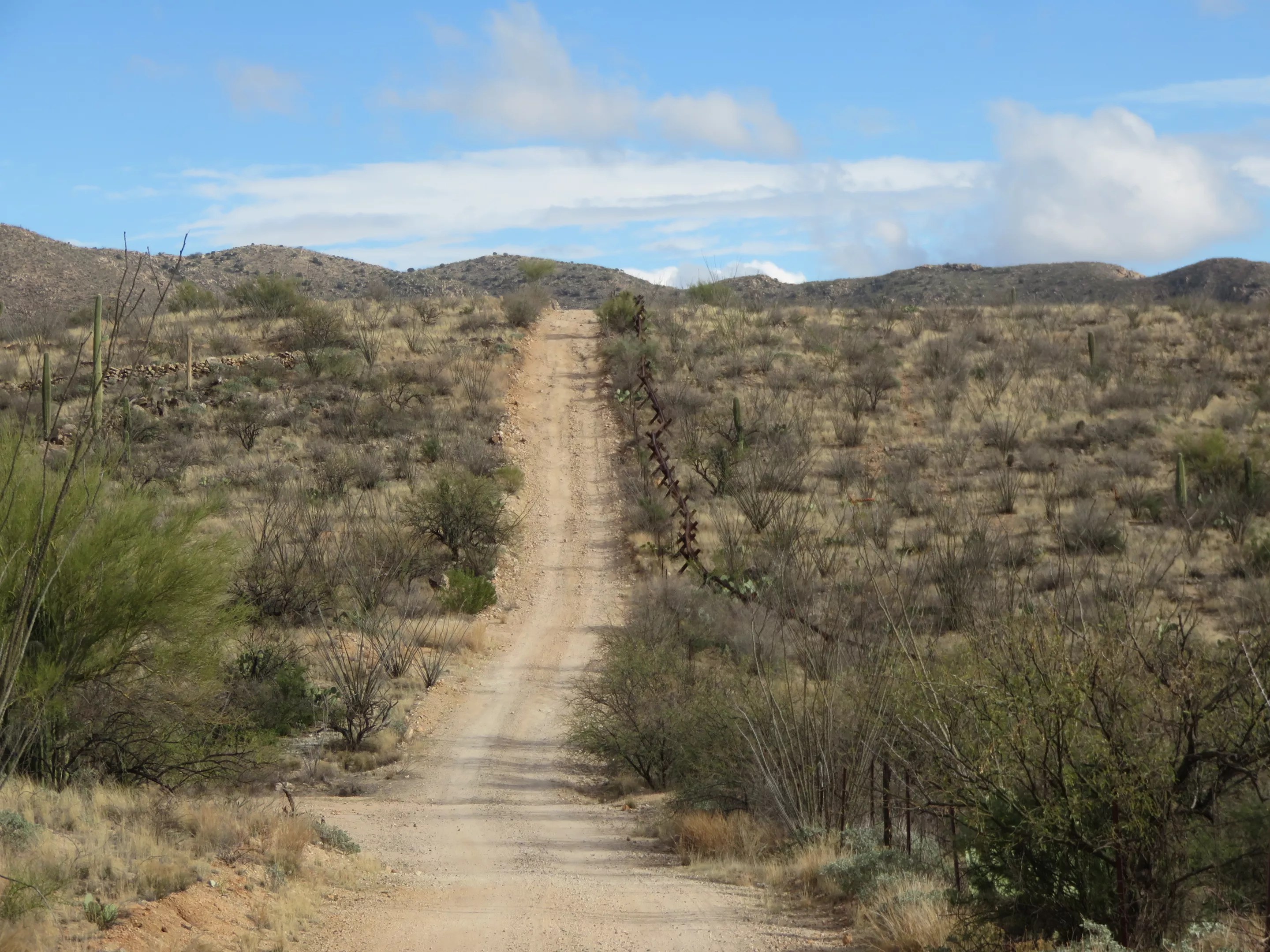
Large swaths of the border between Arizona and Mexico are divided only by Normandy-style vehicle barriers like these on the Tohono O’odham reservation.
Ray Stern
AS SIMPLE AS LINKING LEGOS
At the February 8 Quail Creek Republican Club town hall, Brian Kolfage described his vision of “linking” his private wall to the federal government’s wall “almost like a LEGO locks in.”
But public roads run along much of the border in Arizona, dividing private properties adjoining the border from wall, fence, and other barriers erected on the Roosevelt Reservation. These roads are among the primary routes traveled by federal agents in their patrols of the border. These roads would necessarily be obstructed in order for Kolfage’s LEGOs to link in with federal border wall.
There are 654 miles of wall, or “primary fencing” (18-foot steel wall), along the roughly 1,950-mile length of the Southwest border with Mexico, according to U.S. Customs and Border Protection Public Affairs Specialist Robert Daniels.
Along Arizona’s roughly 370-mile border with Mexico, Daniels said, are 124 miles of primary fencing. An additional 183 miles of Arizona’s international border are covered by vehicle barriers, much of which is “Normandy-style” fencing constructed of sections of steel railroad track. Primary border wall is further augmented, said Daniels, by 10 miles of “secondary fencing” and eight miles of “tertiary fencing,” primarily in the Yuma area (in the far southwestern corner of the state).
All told, border wall and vehicle barriers cover 307 miles of the Arizona-Mexico border. The remaining 43 miles of Arizona’s border are largely composed of areas where walls and barriers either are not needed, or cannot feasibly be constructed, because of difficult terrain or other considerations. Most of that land is covered largely by barbed wire fence.
On January 25, 2017, Trump issued an executive order, compelling the Department of Homeland Security to build a “contiguous, physical wall or other similarly secure, contiguous, and impassible physical barrier” across the entire U.S.-Mexico border.
No language in the executive order, or any subsequent order, allowed for the linking of the “contiguous” federal wall to privately constructed walls built on private property.
Daniels said he was not aware of WeBuildtheWall or the group’s private border wall building plan.
When asked whether it would be possible to build a wall across the entire southern border of Arizona, Daniels responded: “I would not even go there. That’s … that’s … that’s out of my … that’s out of my, ah, area.”
He referred further questions to Customs and Border Protection’s Washington, D.C., media relations office.
U.S. Customs and Border Protection Acting Deputy Director of Media Carlos Diaz declined to comment on WeBuildtheWall or any other aspect of federal border wall construction.
It is this reality of the border, contrasted with WeBuildtheWall’s fundraising claims, that prompted Spencer’s criticism to Kris Kobach following the February 8 Quail Creek Republican Club town hall event.
“If their ineptitude caused charges of fraud, that means a defense lawyer’s going to have to defend them,” said Spencer, speaking to his description of the group as a “defense lawyer’s gold mine.”
“Did they know that it was impossible for them to build a wall on the border?”
Spencer said he and Kobach did discuss some ideas relating to a few private properties in Cochise County and the possibility of some land in Santa Cruz County. He said he emailed some descriptions of properties in unwalled areas to Kobach. That was the last he heard from WeBuildtheWall, Spencer said.
WeBuildtheWall Inc. communications director, and former Breitbart writer Jennifer Lawrence did not respond to requests for comment on whether the group or its representatives contacted Spencer.
In an interview with the Arizona Daily Star on the evening of the Quail Creek Republican Club event, Steve Bannon said that Kobach and the campaign’s “land acquisition committee” had spent the preceding day meeting with “eight to 10 ranchers,” mostly in Cochise County. Bannon declined to name the ranchers.
Kobach did not respond to multiple requests for comment. Bannon could not be reached for comment.

Lochiel, the near-ghost town where they
Ray Stern
WHERE’S WALLGO?
In a February 16 interview with far-right outlet the Tennessee Star, Brian Kolfage offered tantalizing details of impending wall construction.
“We have a land owner right now who’s ready to sign a contract with us – in Arizona, to start building this wall. And we’re going down there next week, and right after we sign that contract we’re going to be applying for permits – could be a couple weeks out before we start breaking ground on this project,” Kolfage said.
“This one deal could cover about close to 10 miles,” he added, saying that the group was prepared to spend approximately $10 million in order to cover this 10-mile stretch of border.
On February 20, WeBuildtheWall issued a Facebook post stating that Kolfage was “headed to Arizona to sign the first land agreement to break ground for #WeBuildTheWall, on private land!!”
New Times asked Jennifer Lawrence for an interview with Kolfage, and for information pertaining to the location of the building site. She did not provide answers and ceased responding to requests for information and comment from New Times.
Social media posts by Kolfage suggested he arrived in Tucson (in Pima County) on February 20.
Through Instagram posts dated February 21, Kolfage and WeBuildtheWall published a picture of a “structure” situated “in the smuggling corridor minutes from the border,” where Kolfage and “members of our team” had spent “the last couple nights,” while “negotiating a land deal to begin construction on the wall.” No information pertaining to the location of the site was given.
On the evening of February 21, a snowstorm of rare magnitude descended across much of south-central and southeastern Arizona, covering Cochise County, Santa Cruz County, and portions of southern Pima county in inches of snow for days.
Social media posts by Kolfage and Darby during this period suggested the WeBuildtheWall crew had traveled south to Nogales, in Santa Cruz County, navigating the snow-laden roads eastward into the San Rafael Valley and on through Montezuma Pass in the Huachuca Mountains – just north of the international border at the eastern edge of the San Rafael Valley, in Cochise County.
The vast majority of the land in the area of the San Rafael Valley, in both Santa Cruz and Cochise counties, is consumed by federal forest and land owned by the Arizona State Parks Board. The border in this region, stretching west from the Santa Cruz/Cochise County line to the mountains on the periphery of Nogales, is covered in barbed wire and a snaking procession of “Normandy-style” steel vehicle barriers.
An island in the middle of this, squarely in the center of the valley’s border with Mexico, is the historic border townsite of Lochiel.
That’s where New Times found WeBuildtheWall negotiating for a building site with landowners.
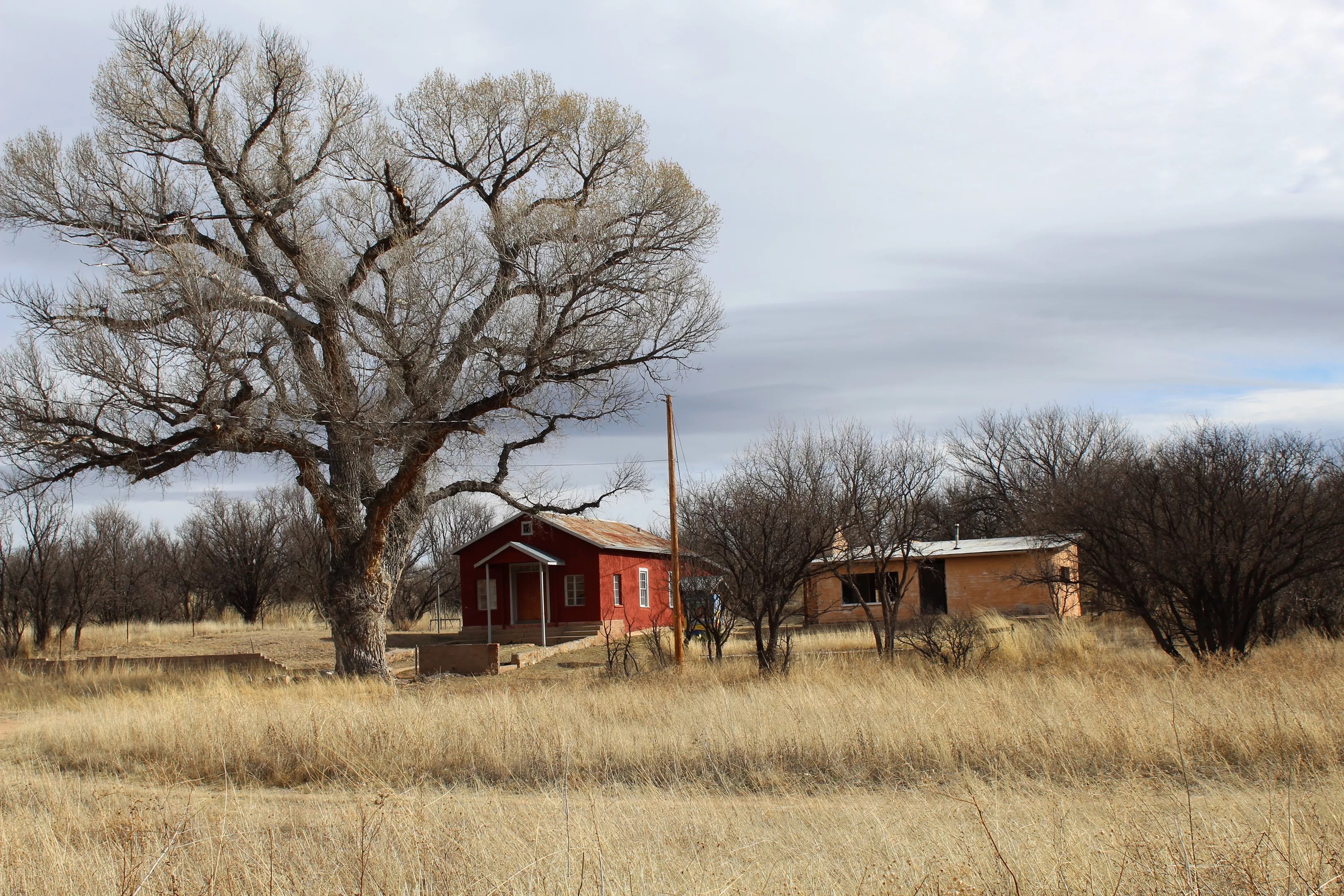
If a privately funded border wall is built near Lochiel, Arizona, will its seven residents mind?
Ray Stern
NOT QUITE A GHOST TOWN
Lochiel was an active legal border crossing point through the 20th century, until the Customs post in the town was closed by the Reagan administration in 1983. The place has since largely evaporated, leaving behind empty homes, the customs post, a schoolhouse, and a church.
According to German Quiroja, president of the Patagonia Museum and caretaker of the Lochiel schoolhouse, the town – with seven current residents – is not a ghost town yet.
Lochiel was settled in 1880 by Quiroja’s great-great-grandparents Antonio and Carolina De La Ossa, who had migrated to the region from California. The De La Ossa clan today dominates private land ownership in and around Lochiel.
Ramon De La Ossa operates a ranch just west of the town. Much of De La Ossa’s ranch land is leased from the U.S. Forest Service, but the rancher does own 160 acres very near to the border. The property, however, is separated from the actual border by a thin strip of federal land and a U.S. Forest Service road. As such, any border barriers constructed along the southern boundary of the De La Ossa ranch must be constructed by the federal government.
Nevertheless, De La Ossa said he met with Kobach and two other men around the time of the February snowstorm.
De La Ossa said he hosted the men in his home and showed them around the town and potential building sites.
Rancher Ramon De La Ossa said he has not had trouble with undocumented immigrants or smugglers, but said he did lose 15 head of cattle to Mexican rustlers “a few years ago.”
Though WeBuildtheWall crew members portrayed their stay on the border in harrowing and spartan terms, claiming to stay in a rough “structure” “so bad even the illegals wouldn’t mess with [them],” De La Ossa said Kobach and company stayed in a bed and breakfast in Patagonia. Indeed, the “structure” image posted to Instagram appears to have been a building at the Spirit Tree Inn Bed and Breakfast in Patagonia.
De La Ossa said he’d heard a little about Kobach’s politics – allegations of voter suppression and racial profiling – but that it didn’t bother him.
The rancher said he believes Trump’s declaration of a national emergency and claims of a border in crisis are just “a political thing,” and that there is “not really” an emergency. Still, De La Ossa would welcome the federal government if it were to start building wall south of his U.S. Forest Service-leased grazing land. De La Ossa said he has not had trouble with undocumented immigrants or smugglers, but said he did lose 15 head of cattle to Mexican rustlers “a few years ago.”
De La Ossa said another of his relatives, Rosemary Miller, had come down from her home in Chandler to meet with the WeBuildtheWall team. Miller owns and cares for the ancestral home of Antonio and Carolina De La Ossa, which is situated on a little over 138 acres running adjacent to most of Lochiel’s roughly mile-long border with Mexico.
This, De La Ossa said, is the property WeBuildtheWall hopes to build on.
But there are three small lots carved out from the center of the Miller property’s southern border, where the old port of entry used to be. Each are less than an acre in size and are owned by a different member of the De La Ossa clan. Without the involvement of these property owners, the wall would have a gaping hole in it – though, given that Lochiel Road (a public road) runs through the middle of these properties, all the way to the border, a gaping hole in whatever is built may be unavoidable.
What’s more, according to Santa Cruz County records, this De La Ossa family property is separated from the international border by a 60-foot easement controlled by the federal government. On this easement, separating the De La Ossa family property from the Normandy-syle steel barriers and tall steel-reinforced chain-link fencing crowned with barbed wire, is a road. The road, according to Quiroja, is primarily used by Border Patrol in their efforts to secure the border.
As such, any barrier built along the southern boundary of these properties would effectively wall out Border Patrol and inhibit access to the federal road and the actual border – at least, for up to one mile.
Quiroja, who said he was not aware of his family’s interactions with Kobach, said the wall would be little more than an expensive “artistic statement.”
According to Ramon De La Ossa, family members owning the smaller parcels have not yet decided if they want to participate. As such, the deal has yet to be finalized.
These members of the De La Ossa family could not be reached for comment. Miller could not be reached for comment.
To either side of this De La Ossa family property are miles of public land: Coronado National Forest to the west, and Arizona state parks followed by more national forest to the east. If WeBuildtheWall successfully builds in Lochiel, this would stand as one lonely mile of wall, separated from federal border wall outside of Nogales to the west by roughly 10 miles, and from the edge of Cochise County’s border wall to the east by about 20.
De La Ossa said Kobach and the two other men did not discuss any other building sites with him.
WeBuildtheWall did not respond to requests for comment relating to Lochiel.
Given that WeBuildtheWall does not seem concerned with whether it actually builds on the border, would it be possible for the group to build anything of consequence elsewhere, on land adjacent to the border?
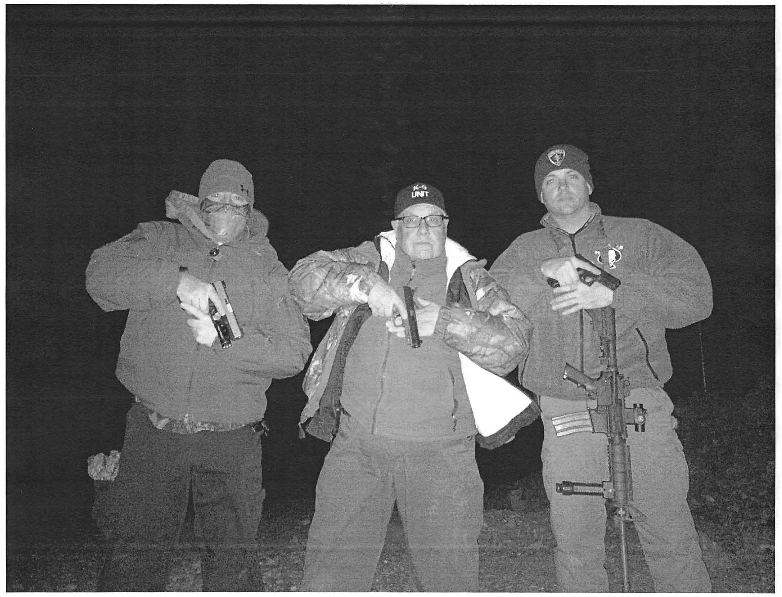
Howard Buffett (center) and friends have helped supply Cochise County Sheriff’s Department with funds to protect the border, but he says he has no interest in working with private developers to build a wall.
Courtesy of Decatur, Illinois, Police Department
BUFFETT, OTHER LANDOWNERS REJECT PRIVATE WALL
Approximately 47 miles of Cochise County’s 83-mile border with Mexico is covered by a nearly contiguous steel wall. Most of it was constructed as a result of the Secure Fence Act of 2006, during the administrations of George W. Bush and Barack Obama.
To the west of the wall – running from a point just southeast of Montezuma Pass, to the Santa Cruz County line – is a 13-mile stretch of barbed wire and vehicle barriers.
The vast majority of this rolling oak country is owned by the federal government, as part of the Coronado National Forest. In fact, the sole piece of private land adjacent to the border in this area is a property known as Mission Oaks Ranch, owned by Iroquois LLC, a private company controlled by Howard Graham Buffett, self-identified Republican son of billionaire investor Warren Buffett.
Property owned by Iroquois at Mission Oaks runs along approximately 1.5 miles adjacent to the international border.
Howard Buffett and Iroquois are active in border enforcement efforts at Mission Oaks and in Cochise County. And, in his interview with the Tennessee Star, Kolfage claimed involvement of at least one unidentified billionaire.
Nevertheless, the Howard G. Buffett Foundation denied any involvement with WeBuildtheWall.
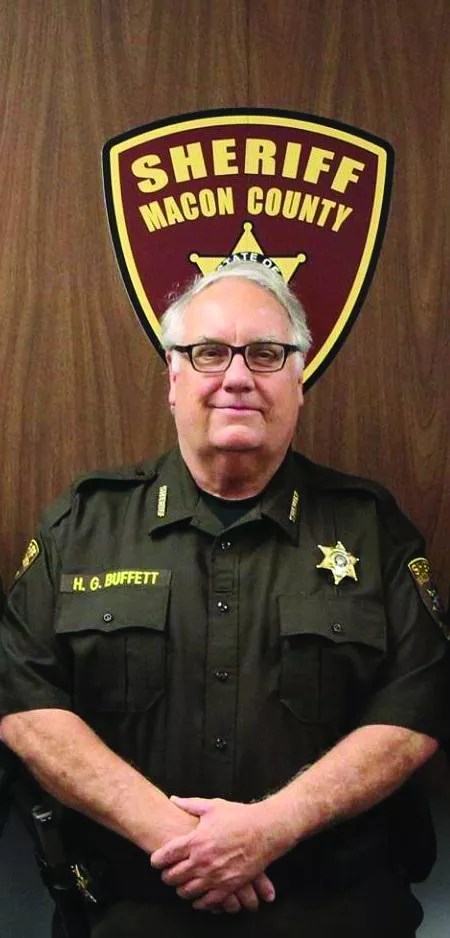
Howard Buffett
Courtesy of Macon County, Illinlois
“No one at the Howard G. Buffett Foundation or its related entities (Sequoia Farm Foundation, Iroquois) has had any contact with WeBuildtheWall, Inc., or the individuals affiliated with WeBuildtheWall,” the foundation said in a statement. “Mr. Buffett and the Howard G. Buffett Foundation (including its related entities) have no plans to work with WeBuildtheWall or any other organization like it.”
To the east of the 47-mile-long wall covering Cochise County’s southern border, running from a point just past the town of Douglas, to the New Mexico state line, is a 23-mile stretch protected by vehicle barriers and barbed wire.
But, like most of the area along the international border, most of the land in this area is owned by either the federal government or the state of Arizona. In fact, only about six linear miles of this stretch is comprised, collectively, of largely noncontiguous private properties situated adjacent to the border.
New Times spoke with owners of 3.3 miles of this private property – none of whom said they had been contacted by WeBuildtheWall. Landowners in this area stated ambivalence and opposition to border wall construction. One representative of a property owner declined to comment, other than to say she had no knowledge of contact from WeBuildtheWall.
Mackenzie Kimbro, a director of Glenn Ranch Corporation (which has property stretching along roughly 1.3 miles of border), said the ranch opposes border wall construction, on the grounds that border wall would impede migration of animals such as jaguars.
Another prominent landowner in the area, rancher John Klump, expressed indifference.
“As far as being worried about building the wall, one way or another, we don’t really care,” said Klump. “We won’t mind if they put the fence up better […] just so we don’t have to go get our cows always from the neighbors down in Mexico. Our neighbors have been – our neighbors in Mexico have been damn good. They always bring our cows back, and we always bring their cows back.”
The remaining 2.7 largely noncontiguous linear miles of private property adjacent to the border in this area are owned by three separate landowners, who could not be reached for comment. The largest of these properties runs along approximately 0.60 miles of border.
In Santa Cruz County, there is only one private property adjacent to the border between the Nogales border wall and the De La Ossa family’s holdings in and around Lochiel. That property is owned by Joyce Roberts. Roberts said she had not been contacted by WeBuildtheWall. She said it would not be possible to build border wall on her property, as her property is separated from the border by a strip of land.
“He indicated that they were tryin’ to obtain funds to, to — ah, construct a wall. But, I explained to him, just as I did to you, that the U.S. Forest Service owns the land, and that he’d have to go through them.” – Rancher Jim Chilton.
Moving west, past Nogales and its border wall, re-entering mountainous terrain of the Coronado National Forest, much of this rugged border is marked only by barbed wire fence.
Jim Chilton operates a ranch covering 50,000 acres of this area, though the majority of this land, including all of the land used by Chilton along the border, is leased from the U.S. Forest Service. The rancher said fencing dividing the United States from Mexico in this area consists of four strands of barbed wire.
Chilton has long been a vocal proponent of increased border security, complaining of illicit traffic on his ranch lands for decades.
Like Spencer and De La Ossa, Chilton said he was contacted by representatives of WeBuildtheWall, including Kobach, in early February.
“He indicated that they were tryin’ to obtain funds to, to – ah, construct a wall. But, I explained to him, just as I did to you, that the U.S. Forest Service owns the land, and that he’d have to go through them,” Chilton said.
The rancher said he recommended Kobach contact a family a little farther down the line.
Chilton declined to give the name of the property owners, but did describe their land as being the sole piece of private property situated along the border west of Nogales, near the boundary of Santa Cruz and Pima counties. According to Chilton, the only border barriers along the border at this property are barbed-wire fence.
This was likely a 158.25-acre parcel owned by Tres Bellotas Ranch LLC. The property’s southern border stretches along approximately 1,000 feet adjacent to the U.S.-Mexico border.
According to Arizona Corporation Commission records, Tres Bellotas Ranch is managed by Lyle and Lowell Robinson, who did not respond to multiple requests for comment.
Tres Bellotas Ranch is the last, and only, piece of private property along the U.S.-Mexico border in Santa Cruz County, west of Nogales.
Continuing west to Pima County, there is one piece of private property situated adjacent to the border between the Santa Cruz County line and the start of the federal border wall east of Sasabe. This is a disused 57-acre piece of grazing property owned by Eagle Creek Land and Cattle LLC.
Devens Gust is a manager of Eagle Creek and professor emeritus at Arizona State University. He said he has not been contacted by WeBuildtheWall, and would not be amenable to granting them access to his property.
The Sasabe-area border wall runs almost to the eastern boundary of the Tohono O’odham Nation. A small portion of a private property located adjacent to the border, just east of the reservation – El Mirador Ranch, owned by the Isaman family – is unwalled, according to Roy Isaman, who lives on the property.
Isaman said he had not been contacted by WeBuildtheWall. Gail Rowell, Isaman’s sister who manages the property with him, said she would rather the government build any walls that are to be built on the border.
According to Tohono O’odham Nation spokesman Matt Smith, the Nation opposes border wall construction, and no representative of WeBuildtheWall has contacted the Nation. Nor, Smith said, is there any private land along the Nation’s border with Mexico.
It is even less likely that WeBuildtheWall has had any luck west of Pima County, in Yuma County- most of which is already walled and occupied by the Barry M. Goldwater Air Force bombing range.
Beyond that lies the baked desert lowlands and dunes of southern California – where Kolfage has acknowledged his team has given up looking for land.
It seems unlikely WeBuildtheWall will be able to build a wall – at least, not to anywhere near the scale suggested in Arizona. As such, other aspects of the group – namely its corporate structure and the histories of those involved with it – offer some clues as to the organization’s true nature.
THE MAGA MAGNATE
Brian Kolfage incorporated WeBuildtheWall on December 28 as a “social welfare organization” under Internal Revenue Service code 501(c)(4).
Unlike charitable organizations organized under IRS code 501(c)(3), contributions given to 501(c)(4)s are generally not tax-deductible. This fact may diminish a (c)(4)’s allure to donors hoping for a tax break, but there’s a reason for it.
According to Kolfage, as stated in his February 16 interview with the Tennessee Star, he opted for (c)(4) status because he didn’t think the “liberal IRS” would give him a more purely charitable (c)(3) designation. And, indeed, the distinction has to do with politics – but not IRS politics.
Per IRS regulations, 501(c)(3) charitable organizations are strictly limited in the amount of lobbying activity they may undertake. They are also, as stated by the IRS, “absolutely prohibited from directly or indirectly participating in, or intervening in, any political campaign on behalf of (or in opposition to) any candidate of elective public office.”
501(c)(4) organizations, on the other hand, may engage in unlimited lobbying activity and may (per IRS regulations) “engage in political campaigns on behalf of or in opposition to candidates for public office, provided that such intervention does not constitute the organization’s primary activity.”
Where the definition of “primary activity” is concerned, we fall into a foggy area. According to Anna Massoglia, a researcher at the Center for Responsive Politics, there is “no specific bright line” metering exactly how “primary activity” is defined, though most organizations use the 49 percent mark of revenue expenditure as the point beyond which the threshold of unacceptable activity is crossed.

Brian Kolfage
Facebook screenshot
Also, 501(c)(4) organizations – often referred to as political “dark money” groups – are not required to disclose the identities of their donors. Funds raised by such groups, said Massoglia, may be donated to political action committees (PACs) and Super PACs, free of any reporting requirements causing the disclosure of the true sources of funds raised. Funds raised by one 501(c)(4) also may be given to another (c)(4), further disguising the flow of anonymous cash.
What’s more, where attempting to gauge the activities, or track the political influence, of a (c)(4) is concerned, such organizations are only required to disclose the identities of the top five contractors employed during any given year (such as those used in political messaging). Hardly a thorough accounting of activity.
Such limited disclosures, Massoglia said – given WeBuildtheWall Inc.’s date of incorporation in late December 2018, and IRS regulations pertaining to such accounting – will likely not be available for public inspection until just after the 2020 election.
It isn’t known whether the group has engaged in any federal lobbying (reports for the first quarter of the year are not due in until late April). But WeBuildtheWall does appear to be a political messaging machine. Facebook, Instagram, and Twitter accounts linked to the group and its administrators push a constant stream of messaging supportive of Trump and his loyalists within the Republican Party. There is also a steady backdrop of content depicting Latin American immigrants and asylum-seekers as carriers of disease, rapists, murderers, and drug pushers.
WeBuildtheWall social media content also regularly states that members of the Democratic Party are, quite literally, enemies of the Republic who encourage “open borders” because of an alleged reliance on votes cast by undocumented immigrants.
This content frequently and explicitly tells it viewers how to vote.
The Federal Communications Commission requires “paid for disclaimers” disclosing who pays for political advertisements aired on television, and the Federal Election Commission has rules regulating political advertisements and requires disclosures relating to those. But, according to Massoglia, the internet and social media are essentially an unregulated wild west where campaign and political issue-related advertisements are concerned. Digital non-candidate-specific political ad buys, Massoglia said, are largely unregulated and unreported to the FEC. What’s more, said Massoglia, where an organization’s own stream of propaganda conveyed through social media platforms is concerned, there is virtually no regulation of any kind.
A closer look at those involved with WeBuildtheWall Inc. offers further insight.
Veteran far-right political operatives Dustin Stockton, Tiffiny Ruegner, and Jennifer Lawrence make up parts of the WeBuildtheWall “team,” according to the group’s website.
Stockton and Ruegner, according to their “team” bios, both served as organizers during the heady days of the GOP’s Tea Party insurgence.
Lawrence and Stockton both went on to write for the far-right Breitbart News Network, once overseen by WeBuildtheWall advisory board member Steve Bannon, who chaired Trump’s 2016 presidential campaign. Lawrence and Stockton also worked together on the 2018 campaign of Dr. Kelli Ward in the Republican U.S. Senate primary race in Arizona, but jumped to the competing campaign of former of former Maricopa County Sheriff Joe Arpaio. Both candidates lost.
Tea Party activist and organizer Ruegner co-founded Right Wing News, later run by Kolfage. The site has been criticized as a purveyor of false information catering to right-wing narratives.
Before Right Wing News, Kolfage ran another outlet, FreedomDaily, which also has been criticized for running “fake news” in order to galvanize support for right-wing causes.
In January 2019, NBC News reported that multiple sources who had worked for Kolfage said that previous Kolfage operations focused on gathering email addresses and other information from readers supportive of far-right political causes for use in fundraising and political campaigns.
According to NBC News reporting, FreedomDaily was one such operation, with Kolfage deliberately playing to readers’ emotions through false reporting of crises, followed by appeals to readers to sign petitions ostensibly meant to address the false crises. Reader contacts were then harvested from the petitions for later use.
A partner of Kolfage’s at FreedomDaily, Amanda Shea, now serves as social media director of WebuildtheWall.
Kolfage’s apparent political activities have taken on a new dimension, stepping out of the stagnant confines of social media and into the real world – with Kolfage, Bannon and his “MAGA All Stars” first taking the stage at the Quail Creek Republican Club event outside of Tucson, then moving on to “Trump-like” rallies at Cincinnati, Ohio, on March 12, and Detroit on March 14.
“It’s really not all about building the wall, too,” said Kolfage, describing the upcoming Midwestern town halls through Facebook on March 9. “It’s about informing and educating these people on why they need to vote a certain way – which also helps our immigration and border wall issue.”
And where the building of any portion of an actual wall anywhere is concerned, Kolfage repeatedly has stated his belief that, once ground is broken, financial support will flood in.
“As soon as we slap up that first mile,” he said on Facebook, “… those large donors and large donations are gonna roll in.”